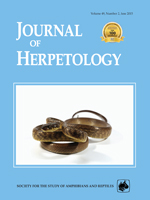Gloydius shedaoensis is an insular endemic and vulnerable pit viper that is restricted to Snake Island, a very small islet in the Bohai Sea of northeastern China. In this study, we used the mitochondrial ND4 gene and eight microsatellite loci to evaluate the genetic structure and amount of genetic diversity in the species. In total, 63 individuals were sampled along eight line transects throughout the range of Snake Island. We found that this vulnerable species presented a remarkably low genetic diversity and moderate inbreeding. No evident genetic or phylogenetic structures were detected within the species, and only two neighboring subpopulations, S-pop1 and S-pop2, showed slight differentiations from others, suggesting the species can be considered as a single unit for future conservation effort. A high level of gene flow was found among subpopulations, and the analyses of relationships between values of individual relatedness and their spatial distributions further showed that closely related individuals tended to scatter throughout the entire island, suggesting widespread dispersals of the insular pit vipers.
How to translate text using browser tools
1 June 2015
Low Genetic Diversity and Moderate Inbreeding Risk of an Insular Endemic Pit Viper (Gloydius shedaoensis): Implication for Conservation
Hui Wang,
Haitao Wang,
Yanhong Xiao,
Xiaoping Wang,
Lixin Sun,
Jingsong Shi,
Aiqing Lin,
Jiang Feng,
Yonghua Wu
ACCESS THE FULL ARTICLE

Journal of Herpetology
Vol. 49 • No. 2
June 2015
Vol. 49 • No. 2
June 2015




